KARVIRESHWAR
Goddess Parvaty wanted to know about various Shiv Lings and deities at several places in Kashi and Lord Shiva was pleased to narrate about such deities (Kashi Khand, Chapter 97).
In the process, the Lord mentions one Karvireshwar Ling in the vicinity of Mahalakshmeeshwar. A devotee who worships Karvireshwar will be free from all ailments and diseases.
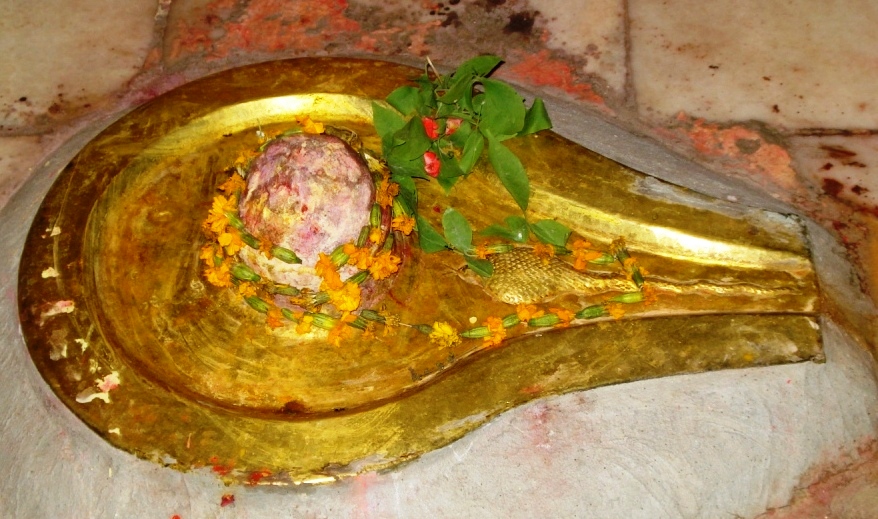
(KARVIRESHWAR)
Kashi Khand states that the entire locality is a Shakti Peeth. There are many powerful Devis in the area and of all the Shakti Peeths in Kashi, Mahalakshmi Shakti Peeth is the most powerful.
LOCATION OF KARVIRESHWAR
Karvireshwar is located at D-52/41, outside Mahalakshmi Temple in the premises of 1008 Shani Maharaj, Poorab Mukhi Shani. Mahalakshmi temple and the locality (Lakshmi Kund) are quite famous and people can approach this place through Luxa by rickshaw.
Please watch our YouTube Video about Karvireshwar at following Link
https://www.youtube.com/watch?v=P7WK69yzHsw&t=5s
TYPES OF POOJA
The temple is open from 06.00 a.m. to 01.00 p.m. and from 05.00 p.m. to 10.00 p.m. Timings are flexible. Devotees can perform pooja as per their convenience.
KASHYAPESHWAR
Kashi Khand, Chapter 100 has prescribed Antargrihi Yatra to be performed daily by devotees. The Yatra (religious tour) covers various deities in the innermost divine place in Kashi.
Among various deities mentioned in the above Yatra, Kashi Khand mentions Kashyapeshwar in the vicinity of Harikesheshwar. Devotees who worship Kashyapeshwar will attain Mukti in Kashi. Mythologically, this Ling is supposed to have been installed by Sage Kashyap.
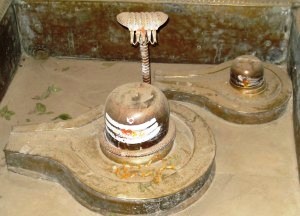
(KASHYAPESHWAR)
LOCATION OF KASHYAPESHWAR
Kashyapeshwar is located at D-35/79, Near Jangambari Mutt, Jangambari, Varanasi. This is a famous place and can be reached by rickshaw. If a devotee travels from Sonarpura to Godowlia, just after Jangambari Mutt (on the same side), in between Raj Furnishers and Akash Travels, there is a flight of steps going up. The Shiv Ling is located on the left side when a devotee climbs the flight of steps.
TYPES OF POOJA
The place of worship is open from 07.30 a.m. to 09.00 a.m. and from 06.00 p.m. to 07.00 p.m. Aarties are conducted in the morning.
KIRATESHWAR
Lord Shiva was in Mandarachal and he sent several batches of Shiv Gans to Kashi to create disturbance in the city and distract King Divodas. (For details, refer to Kukkuteshwar).
In one of the batches, one Shiv Gan named Kirat installed a Shiv Ling called Kirateshwar.
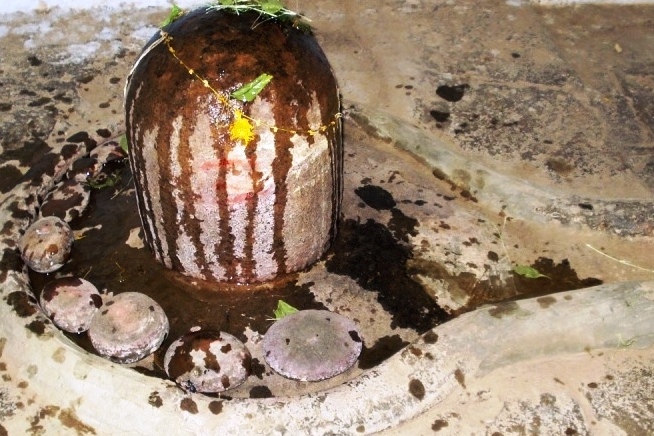
(KIRATESHWAR)
Devotees who worship this Ling in Kashi will shed all fears in their lives. (Kashi Khand, Chapter 55). Further, Kashi Khand, Chapter 69 states that devotees who worship Kirateshwar which is behind Bharabhooteshwar, will not have any rebirth.
LOCATION OF KIRATESHWAR
Kirateshwar is located at Ck.52/15, near Bharabhooteshwar. If a devotee proceeds from Chowk to Neechibaug, immediately after Chowk Police Station there is a left turn which leads to Raja Darwaja. After walking for about 200 yards, there is a right turn where devotees will find Shyamlal Khatri Attar Merchants (Perfumers). Opposite to this shop is the premises Ck. 52/15 and inside the big gate, there is Narayan Agricultural Industries. (This spot is locally known as Goodhadee). Devotees will find Kirateshwar inside the premises, under the ground level.
While Kirateshwar Shiv Ling may not be quite famous, the Attar Merchants are quite famous and devotees will be guided properly. Devotees can reach Raja Darwaja by rickshaw. At times due to heavy rush, they may have to get down at Chowk – Neechibaug road and walk on foot to Raja Darwaja.
TYPES OF POOJA
The temple remains open from 09.00 a.m. to 06.00 p.m. Devotees can worship as per their convenience.
KOOSHMANDESHWAR
Goddess Parvaty requested Lord Shiva to describe the various Teerths (Sacred Ponds) and Shiv Lings in the Holy City of Kashi. (Kashi Khand, Chapter 97). Lord Shiva was very pleased to accede to the request of the Goddess.
Kashi Khand mentions one Kooshmandeshwar Ling in reference to Manikarnika and Pita Maheshwar, among various other Shiv Lings.
A devotee who worships Kooshmandeshwar Ling, will always be blessed by Lord Shiva.
LOCATION OF KOOSHMANDESHWAR
Kooshmandeshwar is located at Ck.10/16, Brahmanal, near Swarg Dwareshwar. This address is as of 2017. Presently this ling could have been displaced due to expansion of Kashi Vishwanath Corridor.
TYPES OF POOJA
The place is open for worship from 07.00 a.m. to 09.00 p.m. Devotees can perform pooja etc. by their own.
KOTEESHWAR (KOTI LING)
According to Kashi Khand, Chapter 69, the place where Lord Shiva wore the skin of Gajasur after slaying the latter, was called Rudra Vasam. (Kindly refer to Krithi Vaseshwar).
Once the Lord, in his form as Krithi Vaseshwar, was sitting alongwith Goddess Uma Devi when Nandi offered his prayers and stated that there are 68 places of worship dedicated to Lord Shiva in this holy place. Various idols/Shiv Lings have been brought from several other places by Nandi and installed in Kashi.
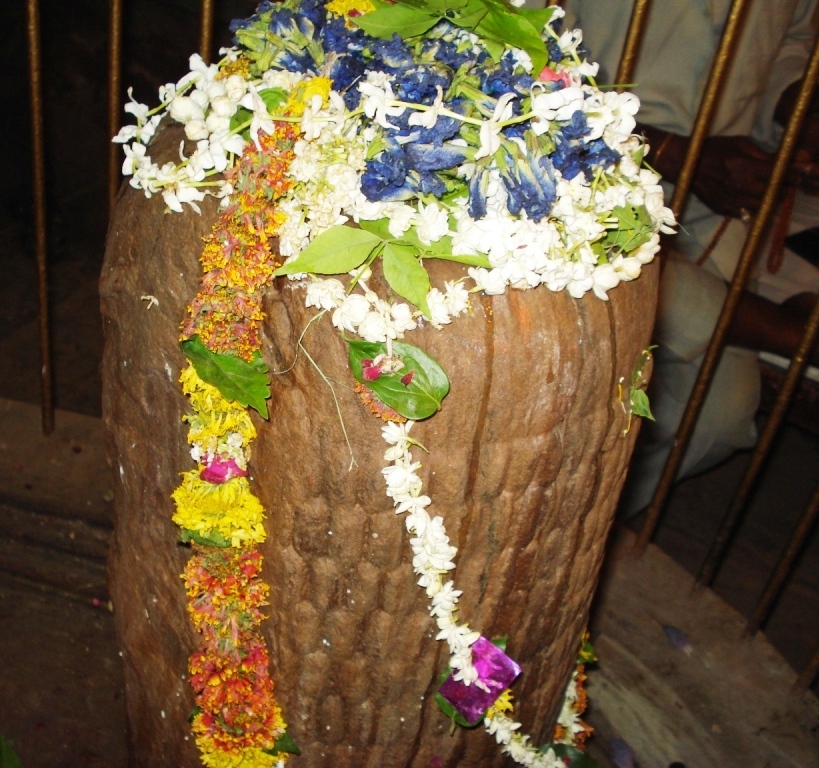
(KOTEESHWAR – KOTI LING)
Kashi Khand mentions one Ling, worshipping which devotees will derive the benefits of worshipping One Crore Lings. This Ling is called Koti Ling. This Ling also finds mention in Ling Puraan, Chapter 3 of the supplement as well as in Shlok 148 to 157, Chapter 92, ibid. According to this, devotees should take bath in Ganges and perform pooja of Koteeshwar Ling which will be equivalent to performing 1 crore Godaan (donary of cow to deserving person).
——————————————————————————————————-
Kashi Khand, Chapter 97, Shlok 63
कोटितीर्थे हृदे स्नात्वा कोटीशं परिपूज्य च
गवां कोटिप्रदानस्य फलमाप्नोति मानव:
A devotee who bathes in the pond called Koti Tirtha and worships Kotishwar ling, gets the benefit of donating one crore cows viz. godaan.
———————————————————————————————————
LOCATION OF KOTI LING
Koti Ling is located at Dasaswamedh Vishwanath Gully in the vicinity of Sakshi Vinayak. Just before Sakshi Vinayak, there is a Saree Shop called Giridhar Stores and one Babaji Shop selling pooja items. In between these two shops, devotees can find Koti Ling.
Devotees can travel upto Dasaswamedh by rickshaw and travel to this place by foot. It is advisable to combine darshan of this deity alongwith darshan of Kashi Vishwanath (Visweshwar) temple etc.
Please watch our YouTube Video about Koti Ling at following Link
https://www.youtube.com/watch?v=P7WK69yzHsw&t=5s
TYPES OF POOJA
The place of worship is open throughout for darshan.
KRISHNESHWAR
On a request by Goddess Parvati, Lord Shiva narrated various deities/Shiv Lings/Teerths (Sacred Ponds) spread over the expanse of Kashi. (Kashi Khand, Chapter 97).
In the vicinity of Vasishteshwar, devotees can find Krishneshwar.
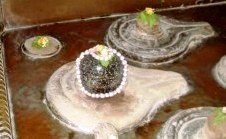
(KRISHNESHWAR)
Devotees who worship Krishneshwar will reach Vishnu Lok after death. Vishnu Lok is that part of Heaven where Lord Vishnu resides.
LOCATION OF KRISHNESHWAR
Krishneshwar is located on the outer wall of Sankata Devi temple at No. Ck.7/159. The Shiv Ling is facing the east and is opposite the Harishchandreshwar Ling. Devotees can reach this place by travelling upto Chowk by rickshaw and walking on foot via Sankata Devi temple (famous landmark). Alternatively, they can take a boat ride upto Sankata Ghat and climb the steps.
.
TYPE OF POOJA
This place of worship is open throughout and devotees can perform pooja by themselves.
KSHEMESHWAR
After the first few batches of Shiv Gans sent to Kashi failed to return, Lord Shiva sent a few more batches of Shiv Gans from Mandarachal to Kashi. (Regarding deputation of Shiv Gans to Kashi, devotees are requested to refer to Kukkuteshwar Ling).
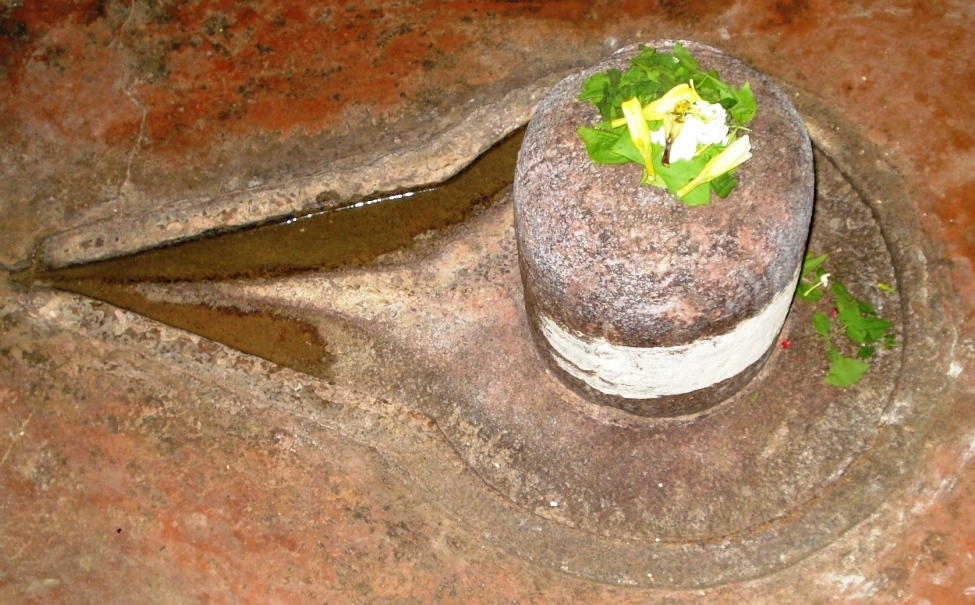
(KSHEMESHWAR)
These Shiv Gans also decided to settle down in Kashi and they installed Shiv Lings which came to be known after their names. One Shiv Gan named Kshemak installed a Shiv Ling and started worshipping Lord Shiva. This Ling came to be known as Kshemeshwar. Kashi Khand, Chapter 55 states that a devotee who worships Kshemeshwar is cleansed of all his sins and will attain happiness and prosperity.
LOCATION OF KSHEMESHWAR
Kshemeshwar is located at Kshemeshwar Ghat at House No. B-14/14, Manasarovar Ghat. People can travel upto Kedarghat by rickshaw and walk on foot upto Kedarghat Post Office and take a right turn towards Kshemeshwar Ghat. The Ling is located in a house belonging to Kumaraswamy Mutt of Kedar Ghat.
TYPE OF POOJA
Devotees can worship the Kshemeshwar Ling through the Grill gate.
KUBERESHWAR
According to Kashi Khand, Chapter 13, in Kambilya there was one Dikshit named Yagya Dutt. He was proficient in all Vedas and Shastras and performed all rituals connected thereto. He had a very handsome son and Yagya Dutt performed the Yagyopavith (Sacred thread ceremony) of his son in due course of time.
However, the boy, named Guna Nidhi, did not perform any rituals a must for a Brahmachari like performing Sandhya Pooja etc. Slowly and steadily he got into bad company and engaged himself in gambling and other such vices. All these days, Guna Nidhi’s mother like an indulgent parent told lies to her husband Yagya Dutt who was under the impression that the boy was engaged in righteous activities.
Guna Nidhi was continuously losing wealth in gambling and he started selling various household articles to settle his gambling debts. In the process he sold one diamond ring belonging to his mother. Once when Yagya Dutt was returning home, he saw one ruffian wearing this diamond ring. When confronted, the person divulged the truth to Yagya Dutt that the ring was given by Guna Nidhi in settlement of gambling debts. Only then Yagya Dutt could realize how he had been cheated all along by his son and his indulgent wife.
Yagya Dutt reached home and at once discarded both his wife and son. He subsequently married one learned man’s daughter and went to some unknown destination.
Guna Nidhi started wandering about, now realizing that he had wasted his life for nothing. He went from one place to another wondering what to do. His ramblings brought him to a secluded place, where he saw some devotees of Lord Shiva going towards a temple. He was very hungry and in the hope of getting some food, he followed them to the temple. Unknown to him it was Shiv Ratri and the devotees started singing religious songs in the temple and Guna Nidhi kept awake the whole night in the hope of getting some food.
Late night when every devotee went to sleep, Guna Nidhi slowly approached the sanctum sanctorum of the temple hoping to find some prasad (eatables offered to the deity) and as it was dark, he tore a piece of cloth from his dress, rolled it like a small wick and lit it to get some illumination. With the help of such light he grabbed whatever food he could and started running away. In this attempt, he stumbled upon the foot of one devotee who started shouting. One of the devotees stuck Guna Nidhi a severe blow on the head and he died instantly.
Soon the attendants of Yam Raj arrived to take Guna Nidhi to Hell as he had committed all sorts of sin in his life. However, several Shiv Gans also arrived at the scene and took him with them. The attendants of Yam Raj read out the sins committed by Guna Nidhi including stealing from Shiva Temple. It is said that taking Shiva Nirmalyam (floral wastes and other prasad etc.) out of the Shiva Temple is the most heinous sin.
However, Shiv Gans clearly stated that whatever sins he might have committed, have been washed away by some good and pious acts unknowingly done by him. On the night of Shiv Ratri he was awake, had watched the Shiv Pooja performed by the devotees, had listened to the Shiv Bhajans and had lit a lamp near the Shiv Ling thereby removing the darkness. He will take birth as Raj Kumar of Kalinga Desa.
In his new birth the boy who was named Daman soon became the King of Kalinga and ordered all subjects in his Kingdom to ensure that lamps are lit in the Shiva Temples. He followed this ritual meticulously. Due to his good deeds in his entire life, he became Dig Pal (attendant of Lord) named Kuber.
Kuber with his intuition could realize the evil doings committed by him in one of his earlier births. He came to Kashi, installed a Shiv Ling made of flowers, lit a lamp and started worshipping Lord Shiva. His intense prayers went for a very long time. Lord Shiva was very pleased and he appeared in person with Goddess Parvaty. Kuber was very happy with the immense light and the presence of the Lord. He started blinking and with the left eye he saw Goddess Parvaty in her beautiful self and wondered about her. Exactly at that time, his left eye lost the vision.
——————————————————————————————————-
Kashi Khand, Chapter 13, Shlok 163
विश्वेशाद्दक्षिणे भागे कुबेरेशं समर्चयेत्
नरो लिप्येत नो पापैर्न दारिद्रयेण नोऽसुखै :
A person who worships Kubereshwar Ling situated to the south of Vishveshwar, will not be surrounded by sins, poverty or sorrow.
———————————————————————————————————
Lord Shiva immediately realized what had happened. However, he blessed Kuber with all sorts of happiness and assured that he (Lord Shiva) would always be with him. Kuber prostrated before Lord Shiva and Goddess Parvaty. The Goddess also blessed him stating that those who worshipped the Ling installed by him, which was called Kubereshwar, would attain all sorts of Siddhi and also attain Moksha in their life.
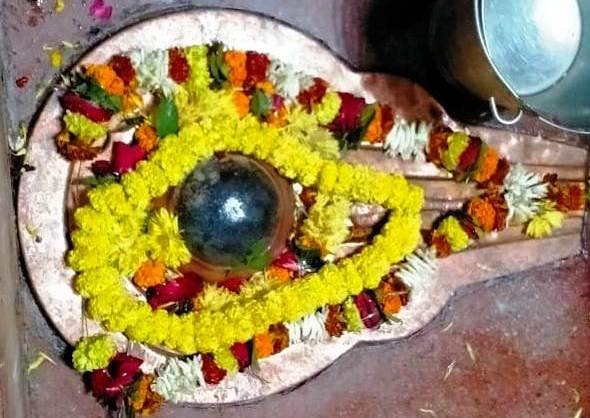
(KUBERESHWAR)
Such devotees will always make good friends and will face no enmity in life. Kashi Khand in this chapter has described the importance of lighting lamps in the temples of Lord Shiva. Here it is important to note that not only in temples of Lord Shiva, but in all the temples it is important to light lamps during twilight time and this ritual is followed in almost all temples all over the world.
LOCATION OF KUBERESHWAR
Kubereshwar is located in the north side of Annapurna Devi at D-9/1, Annapurna Temple premises. If a devotee enters the temple, he has to take a left turn where he will encounter the office of Annadanam (free feeding). Immediately thereafter, to the left is Kubereshwar Ling.
Regarding directions to reach Annapurna temple, devotees may kindly refer Visweshwar temple.
TYPES OF POOJA
The place of worship is open from 05.00 a.m. to 10.00 p.m. Aarties are conducted in the morning and evening. There is also annadanam daily at the temple premises in the afternoon where devotees can get free food.
POOJARIES OF THE TEMPLE
There is no specific Poojari for this temple. However, Shri Pawan Jha is available in the temple and he can be contacted at the temple phone 0542-2392619 for performing any special pooja etc.
KUKKUTESHWAR
Lord Shiva was in Mandarachal and Kashi was ruled by a very pious and religious King named Divodas. In his Kingdom every one was very happy and there was all round prosperity. He had reached an understanding with Lord Brahma that as long as he was ruling, Devas and other celestial beings should stay away from Kashi and should not create any disturbance in Kashi.
Lord Brahma more or less agreed to it but on one condition that King Divodas should prove to be an excellent administrator and all people living in Kashi and visiting Kashi should be treated well in their religious pursuits. The King agreed and accordingly gave excellent governance.
Lord Shiva was very upset at being away from Kashi for a long time and he wanted to make King Divodas commit some mistake. Accordingly, he sent sixty four Yoginis to create some disturbance, but they were enthralled by the beauty and serene surroundings of Kashi which appeared to be a part of heaven. They ultimately settled down there.
When the Yoginis failed to return, Lord Shiva sent Lord Surya with instructions to create some disturbance in Kashi so as to defeat King Divodas in his resolve. Lord Surya came to Kashi and disguised himself as an astrologer, a learned scholar, a religious propagator, a businessman, a brahmin etc. But he could not find any fault with any person in Kashi or the governance of King Divodas. Lord Surya was also very much attracted towards Kashi and the beauty of the city. Lord Surya thought, if he went back to Mandarachal without fulfilling the wishes of Lord Shiva, the latter would get angry.
Lord Surya finally decided to stay in Kashi. He said to himself, disobeying the instructions of Lord Shiva is a sin, but by staying in Kashi and undertaking religious activities, such sins will easily get cleansed. Accordingly Surya settled down in Kashi for the time being.
When Lord Surya did not return, Lord Shiva sent Lord Brahma to Kashi with the same mission. Lord Brahma also did not return. Then Lord Shiva sent several of his Shiv Gans to Kashi in batches. These Shiv Gans arrived at Kashi and they also found the place enchanting. They installed several Shiv Lings and started performing pooja of these lings. When the first batch did not return, subsequent batches of Shiv Gans were sent and they also did not return.
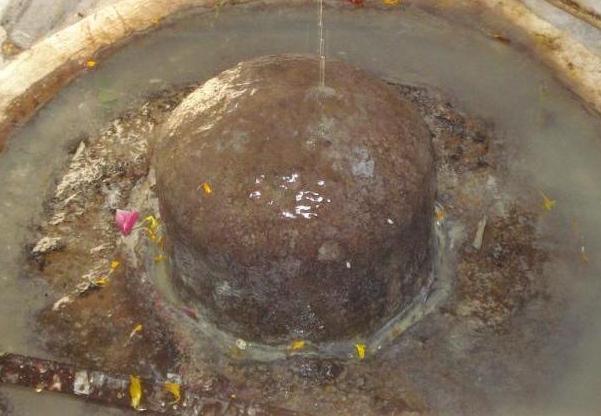
(KUKKUTESHWAR)
In one of the batches one Shiv Gan known as Kukkut arrived at Kashi and being enthralled by the beauty of the divine surroundings, installed a Shiv Ling which was named after him as Kukkuteshwar and started praying to Lord Shiva.
Kashi Khand, Chapter 53 states that a person who worships egg shaped Kukkuteshwar will attain all happiness and will not have residence in womb (there will be no rebirth).
LOCATION OF KUKKUTESHWAR
Kukkuteshwar is located just outside the door opening to the southern side of Durga Devi Temple at Durga Kund. Durga Kund is a famous landmark and people can travel upto this place by cycle rickshaw/auto or car.
Please watch our YouTube Video about Kukkuteshwar at following Link
https://www.youtube.com/watch?v=OTFgs3keGHo&t=24s
TYPES OF POOJA
The temple is open for worship throughout and people can perform pooja on their own.



